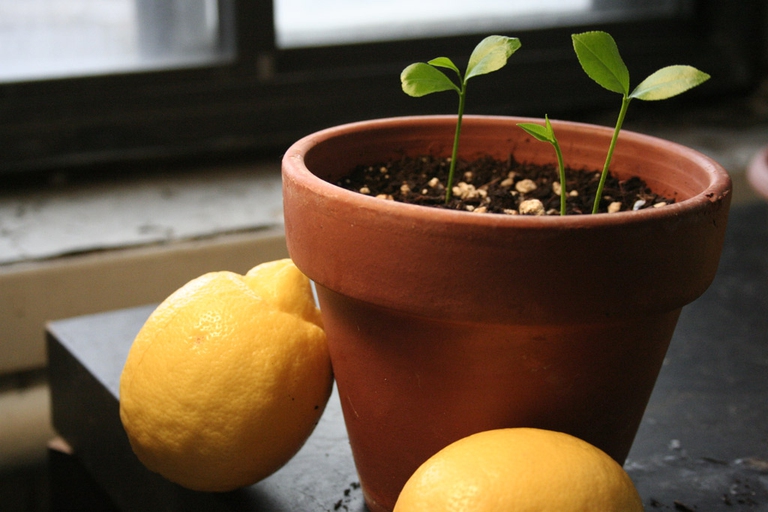
Factory farming conditions and antibiotic-resistant pathogens emerging as a result of them pose an existential threat to humans in the form of zoonotic diseases. Why it’s time to produce and consume food more thoughtfully.
Orange, tangerine, lemon and grapefruit trees should be cultivated in a sheltered position even without a greenhouse. They are long-living plants that pay you back for your care with scented white flowers in the spring and summer and, later, with colorful and delicious fruits. Moreover, these trees have evergreen leaves that give a touch of
Orange, tangerine, lemon and grapefruit trees should be cultivated in a sheltered position even without a greenhouse. They are long-living plants that pay you back for your care with scented white flowers in the spring and summer and, later, with colorful and delicious fruits. Moreover, these trees have evergreen leaves that give a touch of colour to your balcony or garden all year long.
Manuring Citrus fruits need nitrogen, phosphorus and potassium to ripe. Like the evergreen trees, they absorb the nutrients during the whole year, but especially in the spring. Fertilisers should contain animal or plant-derived elements and minerals (iron, zinc, copper, manganese, molybdenum), in order to provide the plants with all kinds of substances.
Repotting Potted citrus trees should be repotted from time to time because these plants need more soil to root and, then, to grow luxuriantly and produce many fruits. Summer, and mainly June, is the best period to repot the trees, and young trees should be repotted every two or three years. It is also important to plant the tree in a proportionate pot and avoid the use of too big pots. Old trees can be repotted even every 4 years. Once your tree is as big as to use a 70 to 80 cm diameter pot you shouldn’t repot it anymore.

Winter shelter If citrus trees are grown at high altitudes, during the winter it is necessary to put them in appropriate shelters to protect them from frost. You can put them under a roofing or in a greenhouse, according to the climate of the place. Anyway, you should put them on the south side of your house in order for them to be more insulated from temperature change. You should avoid heated rooms because dry air is harmful to the leaves.
Pruning Citrus trees should be pruned once a year, before the blooming, in the late winter. You shouldn’t shear many branches, only mixed and split branches, suckers, and the dry parts, making sure that the air and sun reach all sides of the tree.
Bibliography: Aldo Colombo “Coltivare gli Agrumi Ornamentali da Frutto. Le specie e le varietà, le forme di allevamento, le potature, la propagazione, le cure, la raccolta e la conservazione dei frutti”, De Vecchi, February 2004
Siamo anche su WhatsApp. Segui il canale ufficiale LifeGate per restare aggiornata, aggiornato sulle ultime notizie e sulle nostre attività.
![]()
Quest'opera è distribuita con Licenza Creative Commons Attribuzione - Non commerciale - Non opere derivate 4.0 Internazionale.
Factory farming conditions and antibiotic-resistant pathogens emerging as a result of them pose an existential threat to humans in the form of zoonotic diseases. Why it’s time to produce and consume food more thoughtfully.
The world of cinema recognises the link between food choices and the climate crisis by offering vegan menus for awards season events, including at the most important of them all: the Oscars.
Let’s look at the reasons behind the growth of veganism in India, as a small yet vocal section of the population turns towards this diet and lifestyle in the largest milk producing country in the world.
by Jeffrey Y. Campbell, Manager of the Forest and Farm Facility at FAO In the Ecuadorian Amazon, Kichwa farmers grow dozens of products on tiny parcels of land. Their lands hum with biodiversity, yielding nutritious foods that have sustained families for generations. Wandering among fruit and nut trees and crops, these indigenous agroforesters fill their baskets
Mint has many health benefits, but in food it’s often accompanied by artificial green colourings. Instead, Galatea has created a green mint ice cream in a completely natural way.
We’re talking about Galatea, a company that produces semi-finished products for artisanal ice creams using high quality ingredients, natural colouring, excluding thickeners and hydrogenated fats, respecting the environment and supporting the less fortunate.
The mad rush to fake food, like fake meat made with genetically-modified soy, ignores the importance of the diversity of our foods and culinary cultures. It’s a recipe to accelerate the destruction of the Planet and our health.
Like with all foods, the quality of an ice cream can be discerned by reading its label. An expert explains how to do this, and tells us how their company steers clear of chemicals, using only natural ingredients to produce an excellent and “free” ice cream.
Quality ingredients, no artificial colouring and hydrogenated fats. These are the main features of a great ice cream. But what makes an ice cream parlour “good”, i.e. sustainable?







